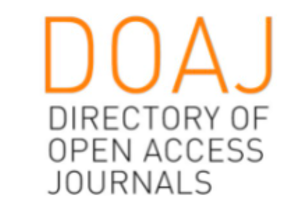THE IMPACT OF REGULATORY QUALITY ON DEEPENS LEVEL OF FINANCIAL INTEGRATION: EVIDENCE FROM THE EUROPEAN UNION COUNTRIES (NMS-10)
DOI:
https://doi.org/10.2478/eoik-2023-0004Keywords:
regulatory quality, financial integration, international financial integration, Granger causality, New member states (NMS-10)Abstract
This study seeks to empirically explore whether the regulatory quality in the NMS-10 impacts deepening international financial integration and whether the strengthening of regulatory quality for NMS-10 has a causal effect on the level of international financial integration (IFI) in NMS-10. The study covers NMS-10 between 1995 and 2020. The estimation of parameters was made with descriptive statistics, the Breusch-Pagan test, the Pesaran test, the Granger causality test, and OLS regression to analyze the impact of REQ on IFI. The findings of the study reveal that regulatory quality has a statistically significant effect in deepening the process of financial integration for both periods, in the pre-accession and postaccession EU process. In addition, the results demonstrate that the regulatory quality of NMS-10 provides sound laws and policies that support the business environment, encourage cross-bordering financial transactions. Moreover, the results of the Granger causality test show that the level of global financial integration is causally impacted by the improvement in NMS-10 regulatory quality. This indicates that regulatory effectiveness might predicts international financial integration.
References
Aizenman, J., Edwards, S., Riera-Crichton, D. (2012). Adjustment patterns to commodity terms of trade shocks: the role of exchange rate and international reserves policies. Journal of International Money and Finance, 31(8),1990-2016. https://doi.org/10.1016/j.jimonfin.2012.05.003
Aizenman, J., & Ilan Noy. (2004). Endogenous Financial and Trade Openness: Efficiency and Political Economy Considerations, Working Papers 04 (04). https://www.economics.hawaii.edu/research/workingpapers/WP_04-4.pdf
Alfaro, L., Kalemli-Özcan, S., & Volosovich, V. (2006). Capital Flows in a Globalised World: the role of Policies and Institutions. http://www.nber.org/chapters/c0148
Alotaibi, A. R., & Mishra, A. V. (2015). Global and regional volatility spillovers to GCC stock markets. Economic Modelling, 45(C), 38-49. https://doi.org/10.1016/j.econmod.2014.10.052
Anselin, L. (2010). Thirty years of spatial econometrics. Papers in Regional Science. https://doi.org/10.1111/j.1435-5957.2010.00279.x
Aslett, K. & Caporaso, J., 2016. Breaking up is hard to do: Why the eurozone will survive, Washington: Department of political science, University of Washington. Baltagi, B.H., & Pesaran, M. H. (2007). Heterogenity and cross-section dependence in panel data models: theory and applications . Journal of Applied Econometrics, 22(2), 229-232. https://www.jstor.org/stable/25146515
Bašić, D. & Ćurić, P. (2021). Adaptability of securitization model to conditions of volatile financial structure. ECONOMICS-Innovative and Economics Research Journal, 9(1), 205-219. ttps://doi.org/10.2478/eoik-2021-0012
Bekaert, G., Hodrick, R.J., & Zhang, X. (2005). International Stock Return Comovements. NBER Working Paper No. w11906. https://ssrn.com/abstract=872742
Bekaert, G., Harvey, C. R., Lundblad, C. T., & Siegel, S. (2013). The European Union, the Euro, and equity market integration. NBER Working Paper No. 16583. https://www.nber.org/system/files/working_papers/w16583/w16583.pdf
Bremus, F., & Fratzscher, M. (2015). Drivers of structural change in cross-border banking since the global financial crisis. Journal of International Money and Finance, 52, 32-59. https://www.sciencedirect.com/science/article/abs/pii/S0261560614002058
Brezigar-Masten, A., Coricelli, F., & Masten, I. (2011). Financial integration and financial development in transition economies: what happens during financial crises?. Economic and Business Review, 13(1-2), 119-137. https://ideas.repec.org/p/mse/cesdoc/10021.html
Christiansen, C. (2014). Integration of European Bond Markets. Journal of Banking and Finance, 42, 191-198. https://doi.org/10.1016/j.jbankfin.2014.01.022
European Comission (2009). The historical development of European integration. https://www.europarl.europa.eu/RegData/etudes/PERI/2018/618969/IPOL_PERI(2018)618969_EN.pdf
Furceri, D., Bernal-Verdugo, L. E., & Guillaume, D. (2012). Crises, Labor Market Policy, and Unemployment, IMF Working Paper 12/65 https://www.imf.org/external/pubs/ft/wp/2012/wp1265.pdf
Ganić, M. & Hrnjić, M . (2021). How Does International Financial Integration Affect Post-Transition Countries’ Growth?. Empirical evidence from the CEE-10 countries. Journal of Central Banking Theory and Practice, 10(3), 117-136. https://doi.org/10.1504/ijepee.2021.111950
Ganić, M. (2020a). Are Determinants of International Financial Integration in the European Transition Countries Different from Post-Transition Countries?. Studies in Business and Economics, 15(1), 40-54. https://doi.org/10.2478/sbe-2020-0005
Ganić, M. (2020b). Financial Globalization in the Emerging Balkans. Exploring Financial Trends on the Eve of EU Membership, Chapter 8. What is driving International Financial Integration in the Emerging Balkans? https://doi.org/10.1007/978-3-030-65009-4
Ganić, M. (2021). Is financial integration a driver of income inequality A panel co-integration analysis in Europe?. International Journal of Economic Policy in Emerging Economies, 14(1), 66-84. https://doi.org/10.1504/ijepee.2021.111950
Hail, L., & Leuz, C. (2006). International differences in the cost of equity capital: Do legal institutions and securities regulation matter?. Journal of Accounting Research, 44(3), 485–531. https://www.jstor.org/stable/3542332
Houston, J. F., Lin, C., & Ma, Y. (2012). Regulatory Arbitrage and International Bank Flows. The Journal of Finance, 67(5), 1845-1895. Retreived from: https://doi.org/10.2139/ssrn.2069776
Kalemli-Özcan, S., Papaioannou, E., & Peydroc. (2010). What lies beneath the euro’s effect on financial integration? Currency risk, egal harmonization, or trade? Journal of International Economics, 81(1), 75–88. https://www.sciencedirect.com/science/article/abs/pii/S002219961000019X
Kirkpatrick, C. (2014). Assessing the impact of Regulatory reform in developing countries. Public Administration and Development, 34(3), 162–168. https://doi.org/10.1002/pad.1693.
Kose, M. A., Prasad, E., Rogoff, K., & Wei, S.-J. (2009). Financial Globalization: A Reappraisal. IMF Staff Papers, 56(1), 8–62. https://doi.org/10.1057/imfsp.2008.36
Kreiken, J. L. (2017). Financial Integration in the EU. An empirical analysis of the associated economic benefits. Thesis. Erasmus University Rotterdam.
Kučerová, Z. (2009). Measuring Financial Integration in central Europe through International Investment Position. Eastern European Economics, 47 (4), 25-41. http://www.jstor.org/stable/pdf/27740129.pdf
La Porta, R., Lopez-de-Silanes, F., & Shleifer, A. (2008). The economic consequences of legal origins. Journal of Economic Literature, 46(2), 285–332. https://doi.org/10.1257/jel.46.2.285
Lane, P. R., & Milesi-Ferretti, G. M. (2018). The External Wealth of Nations Revisited: International Financial Integration in the Aftermath of the Global Financial Crisis. IMF Economic Review, 66, 189-222. https://link.springer.com/article/10.1057/s41308-017-0048-y
Liebscher, K., Christl, J., Mooslechner, P., & Ritzberger-Grünwald, D. (2007). Financial Development, Integration and Stability: Evidence from Central, Eastern and South-Eastern Europe.
Milesi-Ferretti, G. M., & Lane, P. (2003). International Financial Integration., The Institute for International Integration Studies Discussion Paper Series. https://econpapers.repec.org/paper/iisdispap/iiisdp03.html
Mishkin, F. S. (2007). Is financial globalization beneficial? Journal of Money, Credit and Banking, 39(2‐3), 259-294. https://onlinelibrary.wiley.com/doi/full/10.1111/j.0022-2879.2007.00026.x
Mirdala, R. (2008). Financial Integration and Financial Deepening in the Selected European Transition Economies. Journal of Applied Economic Sciences, 3(4(6)), 419-433. https://ideas.repec.org/a/ush/jaessh/v3y2008i4(6)_winter200846.html
Okawa, Y., & Wincoop, E. (2012). Gravity in International Finance. Journal of International Economics, 87(2), 205-215. https://doi.org/10.1016/j.jinteco.2012.01.006
Porta, R., & Shleifer, A. (2008). The Unofficial Economy and Economic Development. https://www.brookings.edu/wp-content/uploads/2008/09/2008b_bpea_laporta.pdf
Ristić, K. (2020). Meta analyses and controversy about financialization, growth and stability: a look from post-transition countries of last decade. ECONOMICS-Innovative and Economics Research Journal 8(1), 41-49. https://doi.org/10.2478/eoik-2020-0005
Robertson, D., & Symons. J. (2007). Maximum Likelihood Factor Analysis with Rank Deficient Sample Covariance Matrices. Journal of Multivariate Analysis, 98(4), 813-828. https://doi.org/10.1016/j.jmva.2006.11.012
Rodrigo, D. (2005). Regulatory Impact Analysis in OECD Countries Challenges for developing countries. South Asian-Third High Level Investment Roundtable. Bangladesh: Dhaka.: https://www.oecd.org/gov/regulatory-policy/35258511.pdf
Rusek, A. (2005). Financial Integration and the New EU Member Countries: Challenges and Dilemmas. Prague Economic Papers, 14(1), 17-32. https://pep.vse.cz/artkey/pep-200501-0002_Financial-Integration-and-the-New-EUMember-Countries-Challenges-and-Dilemmas.php
Sander, H., & Kleimeier, S. (2004). Convergence in euro-zone retail banking? What interest rate pass-through tells us about monetary policy transmission, competition, and integration, Journal of International Money and Finance 23(3), 461-492.
https://doi.org/10.1016/j.jimonfin.2004.02.001
Vo, X. V., & Daly, K. J. (2004). The relationship between net private capital flows and economic growth in emerging Asian economies. International Business Research Conference: Melbourne.
Vo, X. V., and Daly, K. J. (2007). Determinants of international financial integration. Federal University of Rio de Janeiro-Global Finance Conference.
Voronkova, S. (2004). Equity market integration in Central European emerging markets: A cointegration analysis with shifting regimes. International Review of Financial Analysis, 13(5), 633-647. https://doi.org/10.1016/j.irfa.2004.02.017
Vunjak, N, Dragosavac, M., Vitomir, J. & Stojanović, P. (2020). Central and South-Eastern Europe banking sectors in the sustainable development function. ECONOMICS-Innovative and Economics Research Journal, 8(1), 51-60. https://doi.org/10.2478/eoik-2020-0009
Downloads
Published
How to Cite
Issue
Section
License
Copyright (c) 2023 ECONOMICS - INNOVATIVE AND ECONOMICS RESEARCH JOURNAL

This work is licensed under a Creative Commons Attribution-NonCommercial-NoDerivatives 4.0 International License.




















